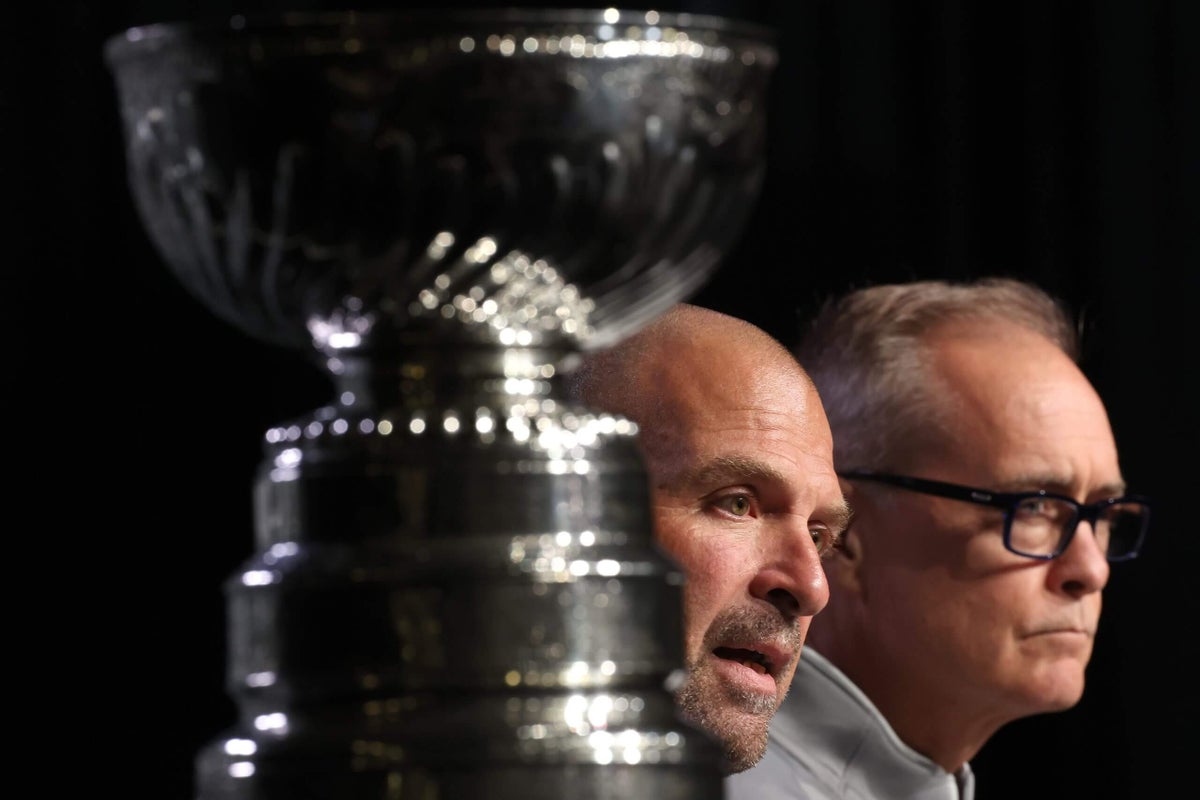It’s that time of year again. Over the past few seasons, I’ve conducted a survey asking fans to rate their confidence in each NHL team’s front office and over the next week, I’ll be collecting answers for this year’s version.
Without you, the reader, this type of story would be impossible. Your input is valued here above all else. The wisdom of the crowd is an underrated tool, and in this case, it can collectively gauge the temperature of each team’s management group based on the most important demographic: The fans spending their hard-earned money. This is a chance for your voice to be heard.
Each management group will be rated on a scale from 1-5 in six categories, based on how confident respondents are in that team’s ability in that category. Recency bias will be rampant here, and that’s a good thing as this is a “what have you done for me lately?” business, but do try to keep a team’s past in mind when evaluating. For teams under new management, try to strike a balance between the previous regime (as often the front office isn’t completely overturned) and the new staff coming in.
Here’s what goes into each category:
Roster building: How the front office has managed its roster, looking in general terms at the players on the roster and whether they formulate the right building blocks for the team’s goal of contending, whether that’s in the present or future.
Cap management: How the front office has managed the team’s finances, with regard to the efficiency of money spent (are there a lot of bad contracts on the books?), cap space, future flexibility and general dollar worth. Bottom line: If a team is or isn’t spending money, are they doing so wisely?
Drafting and developing: How the front office has managed its farm, from draft day to the big leagues, relative to its draft pick capital. Is the team making smart selections and are those players meeting their potential after the draft? In other words: Is the team doing a good job graduating players from the minors to the majors?
Trading: How the front office has managed the trade block. Mainly, whether management made the right calls in trading assets and whether they’re generally on the right or wrong side of a deal.
Free agency: How the front office has managed a period generally synonymous with mistakes and how it has navigated the minefield of free agency. Does the team generally give out reasonable deals, or is it prone to overpaying and overcommitting to players it shouldn’t?
Vision: How the front office communicates its plan, both implicitly and explicitly. Vision is mostly an abstract concept, one that boils down to whether a team’s plan to build a Stanley Cup contender is evident in its decision-making process and whether its plans for the future appear sound.
Here are the past versions:
2024 front-office confidence rankings | 2023 front-office confidence rankings | 2022 front-office confidence rankings | 2021 front-office confidence rankings | 2020 front-office confidence rankings | 2019 front-office confidence rankings | 2018 front-office confidence rankings
Really, it all boils down to the decision-making process and whether you believe the team (or teams) in question are making good choices in each category.
There are two ways to do this: Rate your favorite team’s front office and, for the more ambitious, rate every (or as many as you can) team’s front office. The final results will be a blend of both — a mix of the fan base’s perspective and a general public opinion about how the team operates.
The final results will be made available next week, and the links to each respective survey are below. In both surveys, you can leave a comment elaborating on your opinion of your favorite team’s front office. The best and most concise comments will be included in the final story.
(Photo of Panthers GM Bill Zito and coach Paul Maurice: Steph Chambers / Getty Images)
